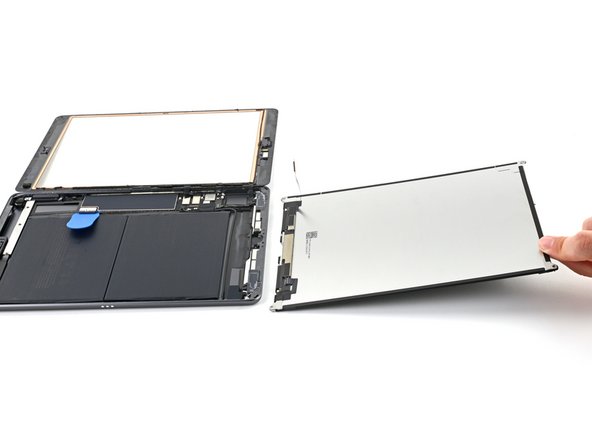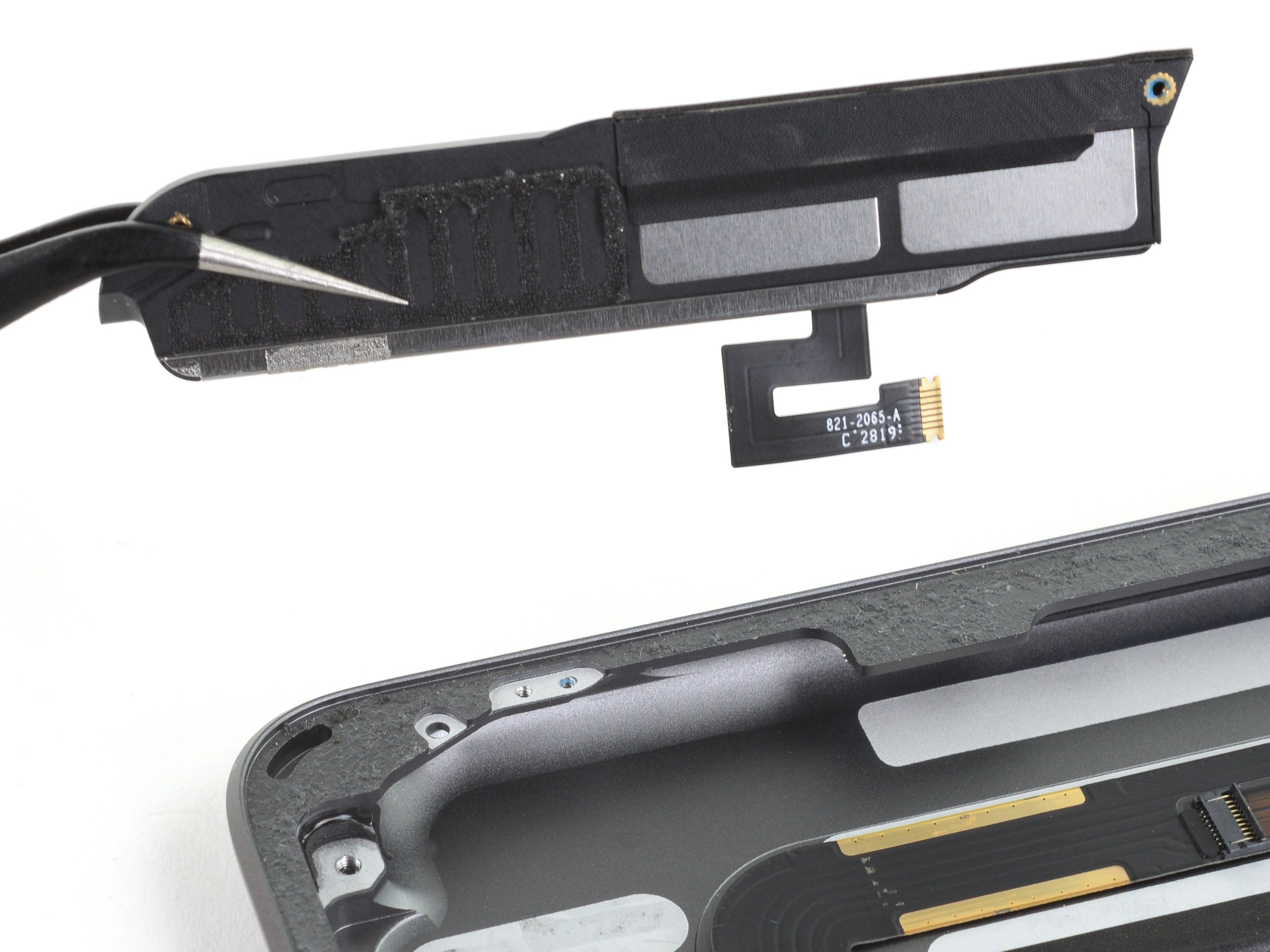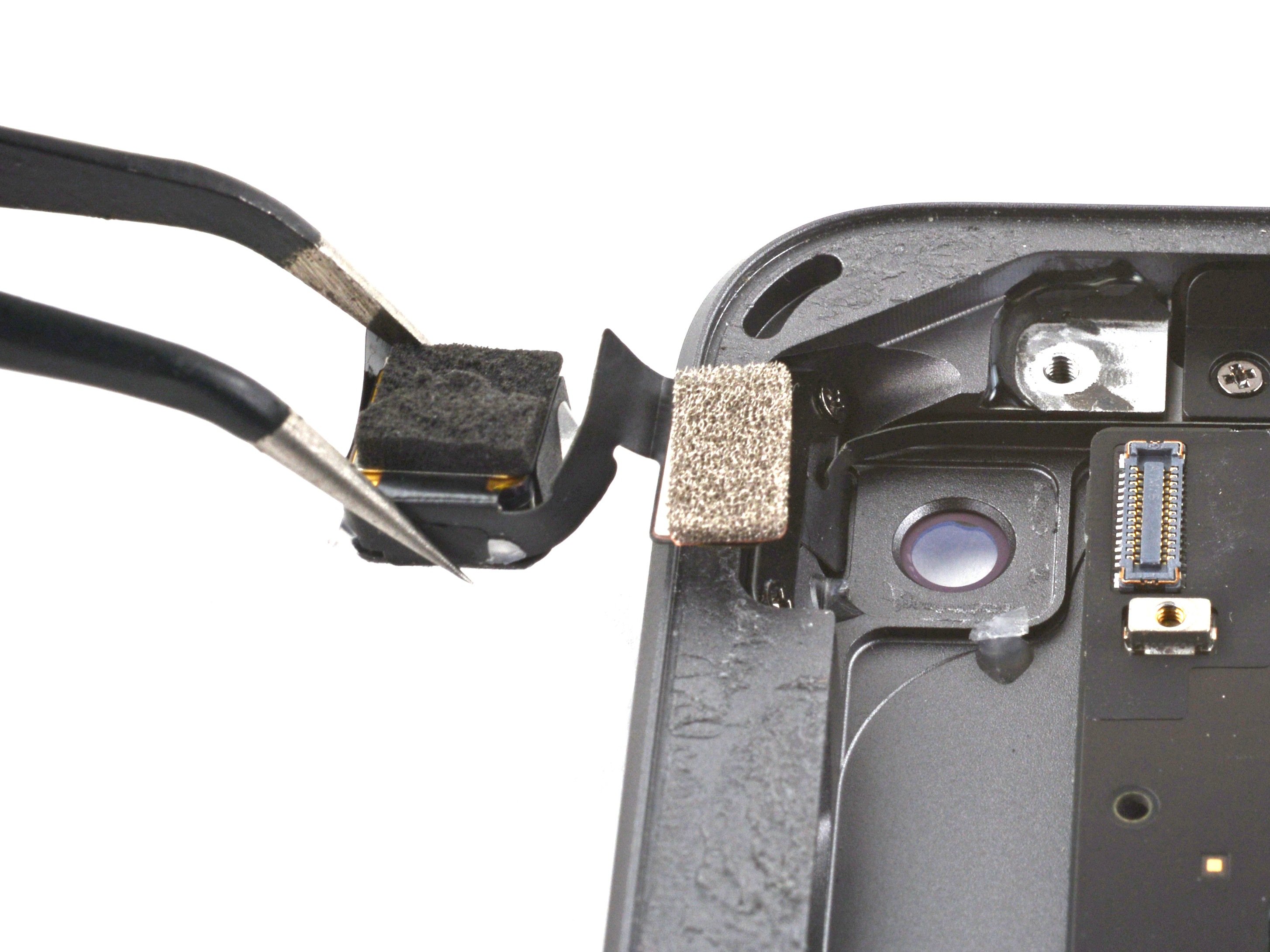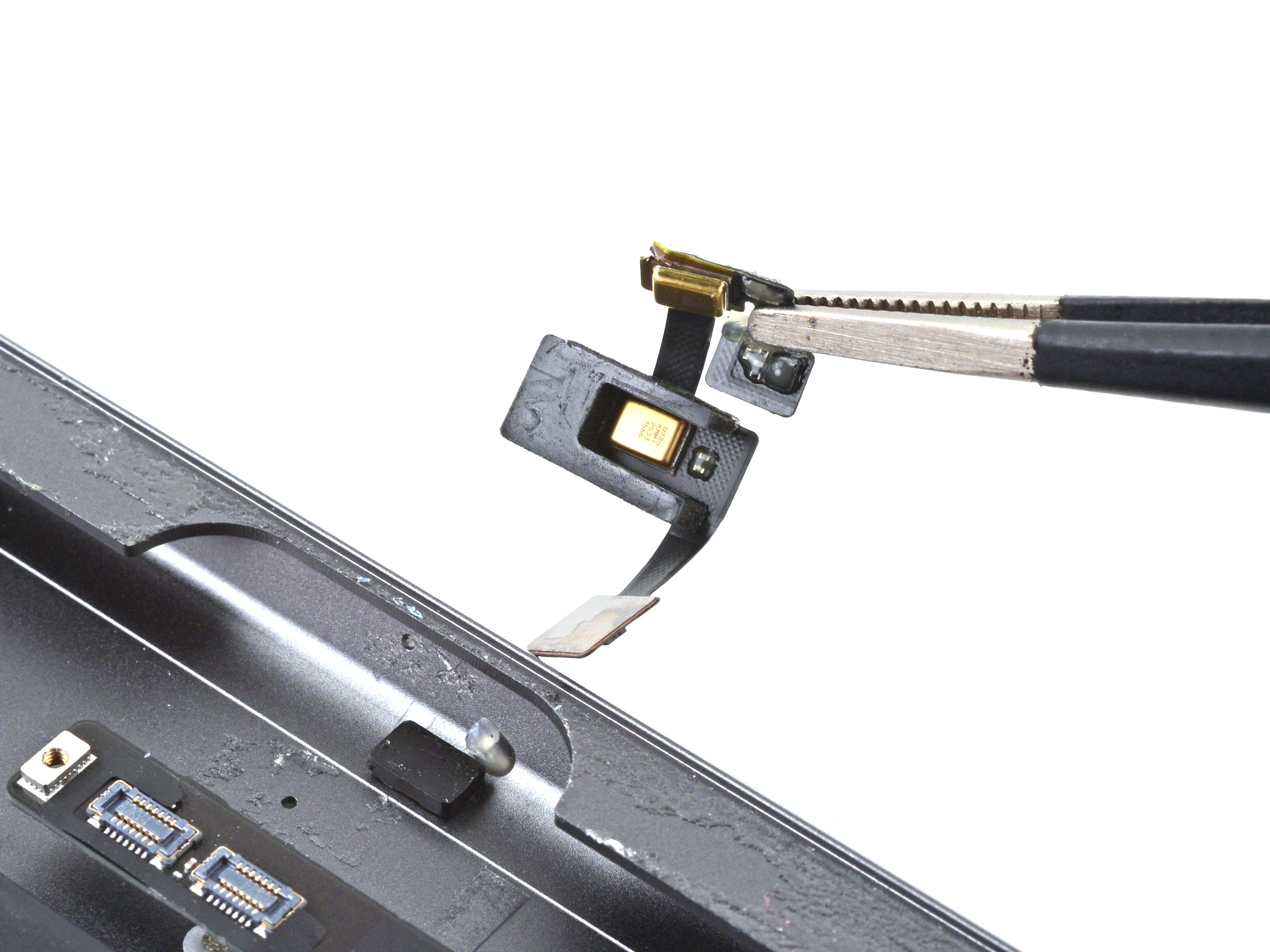iPad 8 Home Button Assembly Replacement
Duration: 45 minutes
Steps: 51 Steps
Heads up! The home button’s Touch ID is uniquely paired with the logic board. Swapping it out means saying goodbye to Touch ID on your device.
Safety first: make sure to drain your iPad’s battery below 25% before you start taking it apart.
Ready to give your iPad 8 Wi-Fi a little TLC? This guide will help you swap out the home button assembly. Just a heads up: this one’s for the Wi-Fi model only! If you’ve got the LTE version, check out the link. Keep in mind that the home button’s Touch ID sensor is best buddies with the logic board, so replacing it means you’ll lose that Touch ID magic. Safety first! Make sure to drop your battery charge below 25% before diving in to avoid any fire hazards if the battery gets a little too excited during the process. Oh, and if your battery is looking swollen, take the necessary precautions. When you’re isolating the battery with a blocker, be super careful—those battery contacts are fragile and can get bent or broken easily, leading to some serious damage. If you decide to skip isolating the battery, stick to non-metal tools unless it’s absolutely necessary (like for screws) to keep things safe and sound for your sensitive circuitry. Some images in this guide might be from a different model, so don’t worry if they look a bit different; it won’t change how you get the job done!
Step 1
- Warm up an iOpener and stick it on the left side of your device for a solid two minutes to get things nice and toasty.
Tools Used
Step 2
- While the adhesive is taking its sweet time to loosen up, keep an eye on these sensitive spots that you’ll want to avoid prying too hard:
- Front camera
- Antennas
- Display cables
Step 3
The next three steps walk you through using the Anti-Clamp, a handy tool we created to make popping open your device a breeze. If you’re not using the Anti-Clamp, just skip ahead three steps for an alternate way to get things open.
For a full rundown on how to work the Anti-Clamp like a pro, check out this guide.
If your iPad’s surface is feeling slippery and the Anti-Clamp won’t grip, slap on some tape to add a bit of traction and keep things steady.
- Give that blue handle a little tug backward to free the Anti-Clamp's arms.
- Set your iPad on a stable object so it sits nice and level between those suction cups.
- Place the suction cups about halfway up the left edge—one at the top and the other at the bottom.
- Keep a steady grip on the bottom of the Anti-Clamp and give a solid push down on the top cup to create some suction magic.
Step 4
- Give that blue handle a gentle tug forward to lock the arms in place. You've got this!
- Now, twist the handle clockwise a full 360 degrees, or until those suction cups start to stretch. Keep going, you're doing great!
- Just a friendly reminder to keep those suction cups aligned. If they start to wander off course, simply loosen them a tad and realign the arms. You're almost there!
Step 5
Take it easy and don't twist more than half a turn at once. Give it a minute between each turn to let the Anti-Clamp do its magic. Patience is key, my friend!
Looking for a fun way to master the art of using a hair dryer? Check out this handy guide!
If the Anti-Clamp isn't giving you the gap you need, just warm it up a bit more and give that handle a gentle clockwise twist for half a turn. You've got this!
- Take a breather for a minute to let that adhesive loosen up and create a nice little opening for you.
- If your screen isn't warming up enough, feel free to grab a hair dryer and gently warm up the left edge of the iPad.
- Slide an opening pick under the digitizer when the Anti-Clamp has opened up a big enough gap for you.
- You can skip the next step—easy peasy!
Step 6
If your screen is seriously cracked, slap on a layer of clear packing tape to give the suction cup something to grip onto. You can also try using some heavy-duty tape instead of the suction cup. And if you're feeling adventurous, a little superglue can help stick the suction cup right onto that broken display.
- After the screen feels warm to the touch, place a suction handle on the left edge of the screen, as close to the edge as you can get.
- Gently lift the screen using the suction handle to create a small gap between the digitizer and the frame.
- Slide an opening pick into the gap between the digitizer and the frame to start separating them.
Tools Used
Step 7
No stress if you spot the opening pick poking through the digitizer—just gently pull it out. The LCD should stay safe, but be careful not to leave behind any stubborn adhesive residue.
- Pop in a second opening pick right where you just made a gap.
- Gently slide that pick down toward the bottom-left corner to loosen up the adhesive.
- Keep the pick wedged in the bottom-left corner so the adhesive doesn’t sneak back together.
Step 8
- If your opening pick gets a little too cozy with the adhesive, just give it a smooth 'roll' along the edge of the iPad to keep that adhesive separation going like a pro.
Step 9
- Gently slide the first opening pick to the top-left corner of your device to break the adhesive seal. You're doing great!
- Keep that pick right there in the corner to stop the adhesive from sticking back together. Nice job!
Step 10
- Warm up an iOpener and stick it on the top edge of your device for a solid two minutes to loosen things up.
Tools Used
Step 11
- Gently twist the pick around the top-left corner to loosen that stubborn adhesive and get things moving.
Step 12
Keep the pick away from the front camera lens—sliding over it could leave you with a blurry selfie spot. The next steps will help you dodge that mishap!
- Gently slide the opening pick along the top edge of your device, making sure to stop right before you hit the front camera. You’re doing great—keep it steady!
Step 13
- Gently pull the pick out until just the tip is nestled between the digitizer and the frame. You're almost there!
- Slide that pick above the front camera to break free the adhesive. You're doing great!
- Keep the pick close to the right side of the front camera as you move forward. You're on the right track!
Step 14
- Slide the pick back in and gently nudge it up towards the top-right corner to fully cut through the top adhesive.
- Keep the pick wedged in that corner so the adhesive doesn’t sneak back together.
Step 15
- Warm up an iOpener and stick it to the right side of your device for a solid two minutes to loosen things up.
Tools Used
Step 16
- Swing that pick around the top-right corner of your device to gracefully break free the adhesive.
Step 17
The display cables hang out roughly halfway up from the bottom edge of the iPad. Slide carefully and stop once you hit about three inches from the bottom to avoid any surprises.
- Slide a fresh opening pick into the iPad's right edge and glide it smoothly to the middle.
Step 18
- Warm up that iOpener and give it a cozy spot on the bottom edge of your device for a solid two minutes.
Tools Used
Step 19
Be careful not to spin the pick all the way around the corner—it's a quick way to mess with the antenna.
- Gently slide the bottom-left pick down to the bottom-left corner to loosen up that stubborn adhesive.
- Keep the pick snug in the bottom-left corner before moving on to the next step.
Step 20
Gently slide the pick towards the home button – keep it close, and avoid pushing away from it. Otherwise, you might accidentally harm the antenna. Go slow, stay steady!
If you need to slide the pick over this section again, simply take it out and re-insert it from the bottom-left corner. Easy peasy!
- Gently slide a new opening pick into the little gap you just made at the bottom edge of your iPad.
- Carefully glide the pick over the antenna, stopping just shy of the home button.
- Keep the pick to the left of the home button and carry on with the next steps.
Step 21
Keep the pick insertion shallow—just about 1 mm—to dodge any antenna drama on the right side.
- Pop that opening pick right into the little gap you've just made, nice and easy.
- Gently slide the pick under the home button, gliding it towards the bottom-right corner. Just let the tip sneak in between the digitizer and the frame—no need to rush!
Step 22
Just remember to slide that pick toward the home button, not away from it! We wouldn't want you to accidentally mess up the antenna. You've got this!
If you find yourself needing to slide that trusty pick over this area again, just pop it out and reinsert it at the bottom-right corner.
- Slide the pick back in and gently wiggle it towards the home button to fully loosen that stubborn bottom adhesive.
- Rest the pick just to the right of the home button before moving on to the next step.
Step 23
- Warm up an iOpener and stick it onto the right edge of your device for a solid two minutes to get things nice and toasty.
Tools Used
Step 24
Take it slow and steady here! Make sure the adhesive is nice and warm so it’s easy to work with, and carefully separate all the adhesive using a pick. Don’t hesitate to pause and reheat if needed—patience pays off!
If you're feeling some serious resistance, don't sweat it! Just warm up those edges a bit more and gently glide your opening pick along them.
- Gently twist the two opening picks at the left corners of your iPad to give the digitizer a little lift, while also helping to break free the last bits of that stubborn adhesive.
Step 25
- Gently lift the left edge of the digitizer to help loosen that stubborn adhesive along the right edge of your iPad. You've got this!
Step 26
- While holding the digitizer steady, gently slide an opening pick between the two display cables. This will help you break through the last bit of adhesive and free the screen. Take it slow, no rush!
Step 27
- After you’ve carefully loosened all the adhesive, open up the digitizer like a book and lay it flat next to the iPad.
- When putting things back together, wipe off any leftover adhesive from both the frame and the digitizer (if you’re reusing it) using some isopropyl alcohol. Then, swap in fresh adhesive strips or pre-cut adhesive cards to keep everything snug.
- Keep an eye on those display cables during reassembly—fold them neatly under the LCD to avoid any accidental damage.
Step 28
- Grab your trusty Phillips screwdriver and tackle those four 4.3 mm screws that are holding the LCD snugly against the frame. You've got this!
- As you dive into this repair adventure, keep an eye on each screw and remember where they belong. This way, your device will stay happy and healthy!
- Don't forget to peel away any tape that's hiding those LCD screws. We want them to shine bright and ready for action!
Step 29
Hold your horses! Don't try to completely detach the LCD just yet; it's still hanging on by a flex cable.
- Grab your trusty spudger and gently nudge the LCD out of its cozy spot, just enough so you can get a good grip with your fingers.
- Now, let’s flip that LCD like you’re turning the page of a favorite book—lift it near the camera and roll it over towards the home button end of the frame.
- Place the LCD on a clean, soft, lint-free surface to give those display cables some room to breathe.
Tools Used
Step 30
- Grab your Phillips screwdriver and gently unscrew the 2.3 mm screw holding the battery connector in place on the logic board. Take your time—it’s a tiny guy!
Step 31
Check out these photos to get a glimpse of the battery connector hanging out under the logic board. Keep them handy as a guide while you carefully disconnect the battery.
You'll notice those clever cantilever springs on the logic board that press against the battery contact pads. Since both the logic board and battery are stuck down pretty good, you'll want to slide something thin and flexible between those contact points to make the disconnection happen smoothly.
Step 32
Handle the battery blocker with care! Those battery contacts are delicate and can bend or break easily, causing damage that’s tough to fix.
Make sure the battery blocker’s logo is facing upwards, just like it should. Easy, right?
No need to go overboard with force when sliding the battery blocker under the connector. If you're finding it a bit tricky, grab a playing card to gently disconnect the battery instead.
The battery blocker or playing card should glide under the logic board smoothly, no hiccups. Once it's in, it should rest at a cool 15-degree angle. Simple and sweet.
- Gently slide the battery blocker under the logic board's battery connector at a cool 35 degree angle.
- Keep that battery blocker in position while you tackle the rest of the repair!
Tools Used
Step 33
- Grab your trusty Phillips screwdriver and let's get to work! Unscrew those three screws, each a petite 1.4 mm in length, that are holding the display cable bracket in place. You've got this!
Step 34
- Gently grab your tweezers or just use your fingers to lift off the display cable bracket. It’s a simple step, just a little careful finesse to make sure everything stays in place.
Tools Used
Step 35
- Grab your trusty spudger and gently use the flat end to lift up and disconnect that LCD cable press connector like a pro!
- When you're ready to re-attach those press connectors, just make sure to align it carefully and give one side a little press down until you hear that satisfying click, then do the same for the other side.
- Just a friendly reminder: steer clear of pressing down in the middle! If the connector is out of alignment, those pins can bend and nobody wants that kind of headache.
Tools Used
Step 36
- Gently remove the LCD and place it face down on a clean, soft surface that’s free of lint. This way, it stays safe and sound while you work your magic!
Step 37
- Grab your trusty tweezers and gently peel away the tape that's keeping the home button cable ZIF connector under wraps. You've got this!
Tools Used
Step 38
- Grab a spudger, opening tool, or even your fingernail, and gently flip up the tiny hinged locking flap on the home button cable ZIF connector.
Tools Used
Step 39
- Grab a trusty pair of tweezers and gently pull the home button ribbon cable straight out of the ZIF connector. You've got this!
Tools Used
Step 40
Be gentle when prying your iPad apart—focus on the connectors themselves, not the logic board socket. A little care goes a long way!
- Grab that trusty spudger and use the flat end to gently pry up and disconnect those two digitizer cable press connectors. You've got this!
Tools Used
Step 41
Be careful not to snag or damage the home button ribbon cable – it's more delicate than it looks!
- Gently slide the flat end of a spudger under the vibration isolator located in the bottom-right corner of your device and give it a little nudge to lift it up.
- Once it's loose, go ahead and pull out the vibration isolator.
Tools Used
Step 42
The home button cable is lightly stuck with adhesive, so it might take a little gentle persuasion to get it free.
- Grab a pair of tweezers and gently lift that home button cable off the frame. Nice and steady – you've got this!
Tools Used
Step 43
Grab an opening pick and gently slice through any leftover adhesive still holding the front panel assembly to the frame.
Keep in mind, without proper insulation here, parts of the digitizer might short out against other components, which can mess with touch input.
This insulation is sneaky—it's invisible to the naked eye and not the same as the foam dust barrier strips you’ll find on many iPads.
- Kick things off by gently detaching the front panel assembly.
- If your new display is playing tricks with 'ghost' or 'phantom' touches, don't sweat it! Just stick a layer of super thin insulating tape, like Kapton (polyimide) tape, on the highlighted spots at the back of the panel. But hey, if you grabbed one of our replacement digitizers, you're in luck—it's already got the right insulation, so no extra tape needed!
- As you get ready to put everything back together, make sure to clear away any leftover adhesive from the iPad. Give those glued spots a good clean with high concentration isopropyl alcohol (90% or greater) and a lint-free cloth. This little prep will make sure your new adhesive sticks like a champ!
- Before sealing everything up, take a moment to test out your iPad's functions and apply those pre-cut adhesive strips to the back of the display using our handy display adhesive application guide. You're almost there!
Step 44
The home button cable is held down with a bit of gentle adhesive.
- Gently peel the home button cable off the back of the front panel with your fingers. Take your time, and it should come off smoothly.
Step 45
If the adhesive is being stubborn, don’t go full Hulk on the pick. Instead, gently warm up the home button cable with an iOpener or a hair dryer to soften that sticky stuff.
- Gently slide an opening pick under the home button cable to carefully lift it away from the front panel.
- Keep sliding the pick along until you reach the home button bracket, staying smooth and steady.
Tools Used
Step 46
- Gently slide an opening pick under the top part of the home button cable to carefully lift the metal contact away from the home button bracket.
Step 47
- Warm up an iOpener and place it on the home button bracket for about thirty seconds to loosen things up.
Tools Used
Step 48
If you bend or warp the home button bracket, you might find that your home button loses its delightful 'click' when you put everything back together. Let's keep that button happy!
If the home button bracket starts to bend before you can pop it off, try dropping a little high-strength (90%+) isopropyl alcohol on the bracket mounts to help loosen things up.
- Grab your trusty opening tool and gently pry off that home button bracket from the front panel. You're doing great!
Step 49
- Take off the home button bracket carefully.
- When putting the bracket back, grab some strong glue like E6000 to firmly stick it to the front panel assembly.
Step 50
Gently apply pressure. The adhesive is clinging to a sensitive gasket that can easily get torn.
- Gently press on the home button from the front panel to break the adhesive that's holding it down. A little pressure goes a long way!
Step 51
- Alright, it's time to put your device back together—just retrace your steps like a pro!
- Got some e-waste? Make sure to drop it off at an R2 or e-Stewards certified recycler—let’s keep our planet happy!
- Things didn’t go as smoothly as you hoped? No worries! Give some basic troubleshooting a shot, or feel free to reach out to our iPad 8 Answers community for a helping hand.
- Remember, you're not alone in this adventure!






































































































































